Deputy editor James Attwood put out the call: “Who has ended up with an accidental longtermer? What is it? Can it top my T-Roc Cabriolet?”
I glanced out of the window. “Um, possibly, mate.”
When lockdown brought the UK car industry to a screeching halt, it quickly became apparent that whatever car each staff member had been babysitting on the evening of Monday 23 March was going to be their new de facto longtermer, whether they liked it or not. And when the music did suddenly stop, I was left with the keys to the rear-drive version of Lamborghini’s Huracán Evo.
April 29 2020: We don’t have a comprehensive spec for this car, because one doesn’t exist: this is an ‘events’ car – one of two that were trailered from Italy to Millbrook Proving Ground for Autocar, plus a few others, to drive and report on.
Unsurprisingly, the Millbrook meet-up was spiked, so we collected the Huracán from Lamborghini’s service department in north-west London – the day before lockdown. News reports suggested the country was headed only one way, so I put more than 300 miles on the odometer and gathered as many driving and general impressions as possible.
Suffice it to say, even with 29bhp trimmed from the Lamborghini Performante-spec 5.2-litre V10 of the regular Huracán Evo, leaving 602bhp, this thing still goes like a missile. Moreover, it goes better than any other Huracán I’ve driven. It’s rare to see one of these cars with the smallest, 19in wheels, but there’s no doubt these improve the ride and the steering – and possibly even the look of the thing.
Also, the cast-iron brakes are much more progressive than the overservoed and expensive ceramic options, while the new, low-slung Sports seats are, on acquaintance, excellent. Better still, they show Lamborghini’s hunger to genuinely improve the driving experience.
The rear-drive Huracán is box-fresh, remember, and this Grigio Hati (think non-metallic USAF grey) example would’ve been one of the last last cars to leave Sant’Agata before the factory switched to making surgical masks for the largest hospital in nearby Bologna. Without wanting to make unnecessary light of a tragic situation, these are being made by the women who usually stitch together the wild interiors of the Aventador SVJ etc, and they’re bright orange. Good old Lambo.

I’ve answered the NHS’s plea for volunteers, so there’s the amusing prospect of delivering an isolated pensioner’s lunch via spacecraft. Trips to the supermarket and back to Haymarket HQ to grab a monitor have also shown just how docile the Huracán can be, although over-the-shoulder visibility is typically poor on the off-side. The main takeaway is that this car is pretty easy to meander about in.
For now, this stranded supercar sits largely dormant (on the far side of my street, where the parking bays are six inches wider), functioning as an unexpected and outrageous boredom-breaker for the children (and adults) who pass it by. Needless to say, it’s breaking the two-metre rule all the time.
27 May 2020: Flat grey isn’t the most mesmerising colour for a Lamborghini, but this primer-esque hue actually chimes pretty well with the RWD’s ‘back-to-basics’ status in the Huracán Evo line-up. I realise how ridiculous that sounds because this car is anything but basic – something that becomes apparent when, after five painful weeks, you go to wash the coat of sap and dust from its body.
The foam highlights all the mad, kaleidoscopic angles, channels and nooks. Direct the spray six inches to the left of the exhaust tips, for example, and you’re hitting the mammoth rear tyres, which are exposed through the rear bodywork. Like the Ferrari F50 and McLaren 675LT, the Huracán is partly open-worked at the back, and you have to get close to see how spectacular it all is.

24 June 2020: Good times. Our industry is mobilising again and we're starting to test cars in the UK for the first time in what feels like years.
Of course, this also means that all the various cars stranded with Autocar when lockdown was announced must now return to their manufacturer. All except our dear Lambo.
No, not theft. We're simply going to run this flat-grey example for a while longer to uncover precisely how inconvenient, fabulous, stupid, thrilling or otherwise the reality is when it comes to deploying Lamborghini's V10-engined and most attainable supercar on a daily basis.
I’ll admit, it’s a question almost nobody is seriously asking, but if you had the means, you would at least entertain the idea of doing something this absurd, wouldn’t you? Andrew Frankel did. Last year, he ran a lovely McLaren 720S. Between smash-and-grab trips to Geneva, laps of Silverstone circuit and shadowing Eurofighter Typhoons on the Mach Loop, it demonstrated just how rounded and usable some supercars have become despite their performance figures having gone irreversibly stratospheric.
Nobody would expect the less mechanically sophisticated, less ergonomically thoughtful and more blatantly unhinged Huracán Evo to outdo the Macca in this respect. However, we’ve clearly come a long way since the days of the Diablo, which was the first Lamborghini even to use an adjustable steering column, and possibly the Gallardo, which benefited from Audi-grade pragmatism. Is this Huracán the first truly usable and vice-free Lambo?
We shall see, and the equipment list is as good a place to start as any. Slide aboard for the first time and theoutside world compresses into 16:9 widescreen aspect, and your dark surroundings appear to have been penned by Erno Goldfinger. If Lamborghini’s desired effect was to instil an almost theatrical degree of intimidation, the Huracán absolutely succeeds as you slide aboard for the first time, although neither is it short on amenties.
The infotainment arsenal was updated for the Evo, and this car has DAB, Bluetooth, smartphone mirroring (£2400, tsk…), cruise control, a rear-view camera and a slick 8.4in central touchscreen that, jarringly, is higher in resolution than the 12.3in digital instrument display. There’s lots of kit, although I’d trade half of it in for just one cupholder (the Huracán’s Audi R8 cousin gets two!).
Not that you’ll notice any of this at first. No sooner has the door thudded shut than will your eyes settle on the ridiculous red trigger guard protecting the start button for the naturally aspirated 5.2-litre engine. This bit of kit needs no intro, of course. Envy of the supercar class, the V10 is the number-one reason to buy a Huracán. Whether its appeal is undermined by less lavable elements of the package, we'll soon discover.

22 July 2020: HR Owen's service centre, on an industrial estate in north-west London, is a surreal place. And not only because of the forecourt Tetris that provides full-time employment for an iron-nerved Bulgarian called Todor.
Sounds fun, doesn't it? But would you really want the responsbility of threading £450,000 of Rolls-Royce Phantom between an Aventador SVJ and a carbonfibre-bodied Murciélago?
Business, it seems, is good. The place is overflowing with almost-but-not-quite-classic machinery from Rolls, Maserati, Bentley and Lamborghini. Frankly, I'm not sure a better metaphor exists for the explosion in London's number of ultra-wealthy individuals than the daily grind on School Lane. The place is also an impressively busy Bugatti hub, although to witness the mesmerising polished suspension arms and micron-perfect carbonfibre bodies of the Bugatti Chiron and Veyron, you need to leave Todor's controlled chaos and head into the workshop.
After months in the field and some remorselessly hard driving on occasion but, in the main, relative inaction due to lockdown, our left hand-drive Huracán was due a visit to HR Owen to check everything still actually works. And it does, in short.
I wasn’t expecting any problems. The V10 has always fired on the button – at one point even after almost three weeks of forced hibernation – and the only issue to speak of is the ugly bubbling on the protection film for the almost horizontally reclined windscreen. There have been no dashboard warnings or worrying noises or flat batteries. Trickle-charging is often a necessity for playboy Italians but, even with sporadic use, Huracán owners could probably get away without the hassle. In broader terms, Lamborghini has also recently made things more predictable.

In response to Ferrari’s decision to sell its cars with seven years’ servicing included, Lambo is offering four years ‘free’ alongside the warranty, although consumables aren’t included (think £1100 for a set of the sizeable Pirellis) and there has been some list-price inflation as a result, if not by as much as you would expect. The old Huracán LP580-2 cost £156,575 in 2015 and the Evo RWD today costs £164,400. The vast majority of these cars will be specced to £200,000 but, with restraint, you could keep it below £175,000 – and at that point, the entry-level Huracán strikes me as being good value, with its heroic Performante-lite motor.
Cost is always an intriguing topic, and more so in the PCP era. The most austere Huracán spec I’d settle for (£4872 Lifestyle Package, including the nose-lift system, glass engine cover, parking sensors and smartphone pairing, plus £2592 magnetorheological adaptive dampers) costs £174,094. With £35,000 down and 6000 miles annually, over three years with Lamborghini London you would pay £1395 monthly.
That sounds surprisingly manageable, but the optional final outlay (and thus the guaranteed hand-in value) of £114,000 does make me wince. At that stage, taking ownership would cost you £198,000, but even if you jumped ship, you would still have paid £83,000. By comparison, the industry forecaster Autocar uses predicts that were you to buy the car outright from the start, after the same three years and 18,000 miles, you would have lost only £67,000 in depreciation.
It’s no surprise that buying outright is usefully cheaper, but the real winner is the person who picks up one of these cars in 2023 for new Porsche 911 Carrera S money. And that’s the other issue. It's now clear that Lambo built too many Performantes, and prices reflect this. A two-year-old car now costs £175,000, and while the Evo RWD is more subtly brilliant in the handling department than sneering Porschephiles would ever believe, the Perf’s status and rabid agility make it impossible to ignore. It means the newer Evo apparently isn’t selling as well as hoped, but that’s more to do with timing than appeal. So far, this RWD has been issue-free and superb company.
29 July 2020: Dropped by at the farm where my first-generation Ford Focus RS is stored. When the lads that live in the farmhouse heard the Lambo coming they rapidly came a-pedaling. To say they were transfixed by the Huracán would be understating the matter, and ever after 20 minutes they couldn't get enough of it. I know the feeling.
Generally speaking, the car seems to get an awful lot of love from the public who notice it, and makes me think of Lamborghini as the Hawaaiian shirts of the supercar world – fun, theatrical, and strangely classless.

5 August 2020: Rain is not something we love at Autocar. It means ferreting out a good wash near photo shoot sites before nursing the cars the last few miles at a crawl to avoid spraying muck up the sides. Rain also denies snapper the rich sunsets they universally crave. So they sulk.
And yet when the grumps have gone home, I like the 'bad' weather. Modern suspensions and tyres make so much grip that for cars to properly express themselves, you need to be driving seriously hard. Wet roads are a leveller. And if you’re respectful, they’re an opportunity to have fun and explore handling traits in more sensible and, ironically, safer fashion than when simmering rubber meets bone-dry bitumen.
Our cloud grey Evo is an excellent (and, I’ll accept, adventurous) case in point. The AWD Huracán is quicker and more secure than the 602bhp RWD in the dry and even more so in the wet. But the RWD is, hands down, the sweeter to drive, and this fact is magnified on damp days.
At 305mm, the Pirelli P Zero tyres are so wide that they could be formed from reconstituted banana skins and they’d still stick like glue in the dry. Yet when it rains, grip levels drop off by just the right amount and the car’s ears prick up. I’m not talking crossplys-at-Goodwood nervousness, because if necessary the RWD will make swift progress in any weather short of snow or truly torrential rain, but if you want to play, the car obliges with disarming ease on damp roads.

What you therefore have is an Italian supercar whose personality you can explore, and that’s a very rare treat. Ferrari does this extremely well, but it’s that Lamborghini rawness and theatre that make the experience feel extra-special in the Huracán. With its childhood-nightmares demeanour, it shouldn’t be this approachable.
However, things are not perfect. The new RWD gets Lamborghini’s Performance Traction Control System (P-TCS). In Strada mode, any yaw and the system trims engine torque until the car has straightened, nice and safe. In Sport, the P-TCS lets the rear slip wide and then releases torque in advance of the car realigning. The driver can, in theory, sustain oversteer without fear of the car getting ‘away’. Also nice.
The issue is that the system can feel unpredictable in how much it lets the car slide. This isn’t too much of a problem if you’re expecting something to happen, but you might not be, because of an irritating Lambo quirk. Simply, you can’t mix and match the driving modes. Sport is the only setting in which you get the fruity exhaust, the sharpest throttle response and the medium damper setting. Owners are therefore going to default to Sport.
And if they don’t necessarily want an overly relaxed P-TCS? Well, tough luck. In the dry, you might never notice the diminished safety net, but in the wet, you’re halfway to having all the systems off in a mid-engined supercar, and not by choice. Hmm.
And yet I quite like this about the RWD. It may have DAB and electric mirrors, but deep down, it’s still an agreeably hairy-chested supercar. It should intimidate you, and it does.

12 August 2020: As the time to hand back the keys to Lamborghini neared, it gave me new-found perspective on the notion of ‘supercar saturation’ creating some degree of ‘supercar apathy’ among enthusiasts.
This phenomenon stems not only from the modern-day flood of social media images that glorify supercars as nothing more than status symbols, but also the stream of ultra-exclusive creations everyone is today building. Simply, we can’t escape supercars at present, especially on our screens, and some people feel an appreciable portion of the wow-factor is fading because of this – myself tentatively included. And without wanting to sound too dramatic, that sickens me.
Quite apart from the appalling irony involved, it meant that living with a supercar for four months was a dangerous game. It sounds ridiculous, but day after day with a Huracán Evo RWD could cultivate apathy.
Such an eventuality would be genuinely upsetting. For around 29 of my 31 years, I’ve been riveted by cars like the Lambo, just like the slack-jawed Piedmontese locals who saw Countach prototypes fly by. As someone who couldn’t afford one in real life, I want to daydream freely about letting umpteen litres of naturally aspirated V10 rip down my favourite roads, and revel in the fantasy that supercars really do have more in common with UFOs than ordinary cars. I don’t want to be denied all this and coaxed into apathy, either by overfamiliarity or by poseurs who contort themselves to squeeze both Gucci loafer and Rolex Daytona into an image of some poor modified Aventador’s steering wheel.
It is therefore with profound relief that I can report that running this car – and running it hard, with on-street parking, mundane trips to shops, continual interaction with an interested and almost universally positive public, in all weathers and with all those headline ascents to the redline – has been indescribably fun.
And almost constant fun, although I’d be lying if I said it isn’t nice to be free of the oppressive attention – and frankly expectation – Lambos draw. Was it safe? Yes. Nobody apart from the children who decorated the body with sweets laid a finger on the Huracán. I would still have preferred to garage it, but that is different from saying one would have to garage it. Even long stints of lockdown inactivity (before it was marooned, this car was never intended for longterm test-car duties) presented no issues. Not even the battery went flat.

So let’s get gripes out of the way. The new sports seats are lower and more supportive than any other seat offered in the Huracán to date, but they’re also capricious. How they can remain comfortable for 200 miles on one day but immediately leave you squirming the next, I can’t fathom. Lamborghini’s decision to keep the tiny indicator and wiper controls on the steering wheel but do away with any physical volume control is also irritating, even if familiarity helps. More fundamentally, the roofline is so low that you need to stop well in advance of traffic lights to see them.
Were this car right-hand drive, this next one wouldn’t be a problem, but the windscreen wiper doesn’t get anywhere near the driver’s side A-pillar, so you’re left with a foot-wide blindspot when it rains. Not ideal. Then, even on its charmingly normal 19in wheels, cabin din is substantial on distance drives – although what did you expect? In Strada, the damping is at least impressively supple and fluid. Finally, the boot is so small that it becomes an issue, even in a supercar.
And that’s it. The Huracán is fun almost all of the time because it’s largely vice-free. Easy to park, easy to drive and easy to get out of, it shatters the myth that modern supercars aren’t usable – and if you disagree, stop comparing them to an Mercedes-Benz E-Class.
In RWD form, the Huracán also gives the driver much more to get stuck into than the AWD, which relies too heavily on four-wheel steering and torque vectoring. It’s therefore not only the most usable Lamborghini, Lamborghini Urus SUV aside, but also the sweetest to drive, and its price therefore seems reasonable.
As for ‘supercar apathy’? So far as I can tell, you become resistant to it the moment you slump down into something as expressive as this Huracán RWD. And this, remember, is a relatively junior supercar. Even po-faced cynics would be unable to stifle smiles or laughter when the thing gets going. Anything that sets you this low, changes direction so mesmerisingly keenly and floods your body with endorphins at every pin-sharp response to the throttle is unlikely to engender indifference.
And that’s before we even get to the V10 sound, which is just as satisfying when you’re pottering around as it is when the noise has coalesced into a clenched fist at 8000rpm, when it’s so concentrated you can actually detect it reacting with your surroundings.
Apathy? Give me a break. Living with this uncomplicated but soulful machine has given me so many moments that I will never forget.
Lamborghini Huracan Evo RWD specification
Prices: List price new £164,400 List price now £164,400 Price as tested £197,604 Dealer value now £185,000 Private value now £180,000 Trade value now £175,000 (part exchange)
Options: Forged Composite Pack £5412, sports seats £6372, adaptive suspension £2592, transparent engine cover £4860, Sensonum sound system £3024, rear-view camera £1740, gloss black bumper and diffuser £2934
Fuel consumption and range: Claimed economy 20.5mpg Fuel tank 83 litres Test average 19.0mpg Test best 27.2mpg Test worst 9.4mpg Real-world range 345 miles
Tech highlights: 0-62mph 3.3sec Top speed 202mph Engine V10, 5204cc, petrol Max power 602bhp at 8000rpm Max torque 413 lb ft at 6500rpm Transmission 7-spd dual-clutch automatic Boot capacity 100 litres Wheels 19in, alloy Tyres 245/35 (f), 305/35 (r) Kerb weight 1389kg
Service and running costs: Contract hire rate N/A CO2 330g/km Service costs none Other costs none Fuel costs £872 Running costs inc fuel £872 Cost per mile 31 pence Depreciation £22,400 Cost per mile inc dep’n £8.17 Faults Driver’s side window switch occasionally stopped working
READ MORE
Lamborghini Sian: 808bhp hybrid hypercar gains Roadster variant
Lamborghini Aventador SVJ gets ultra-exclusive Xago edition
Lamborghini Essenza SCV12 is 819bhp-plus track-only hypercar

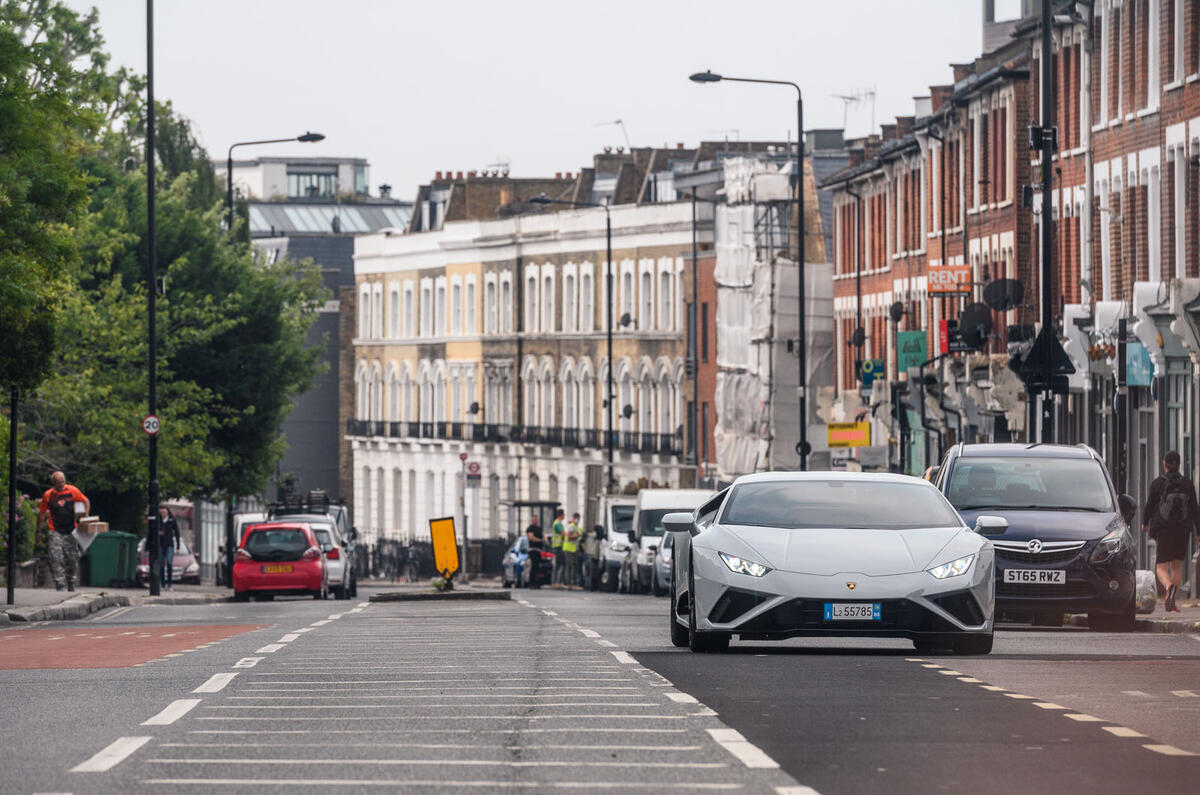
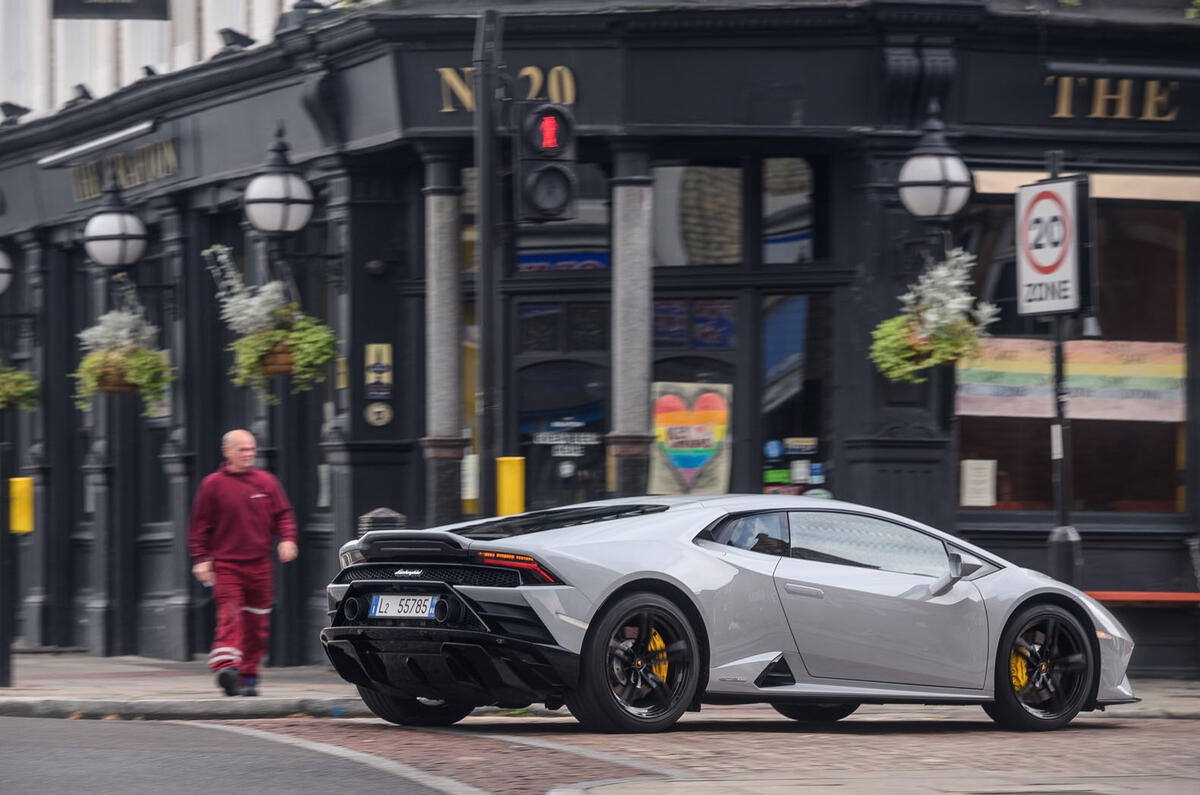
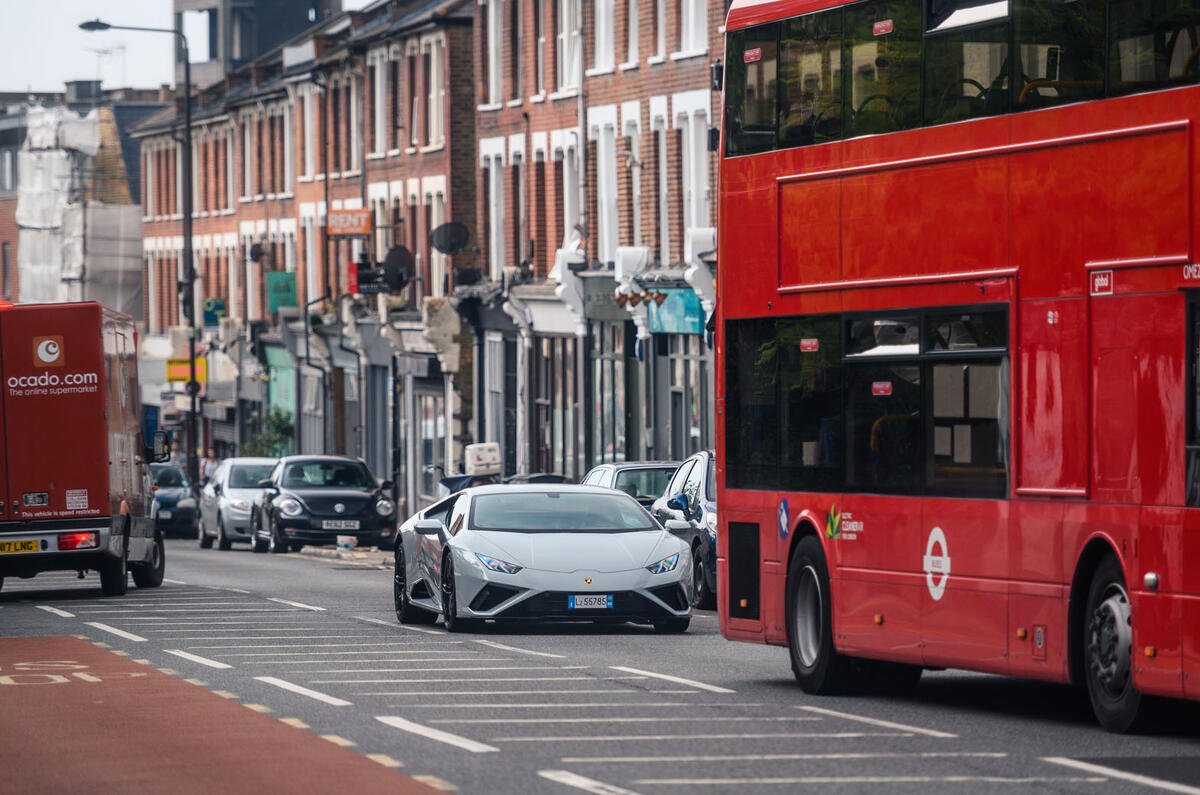
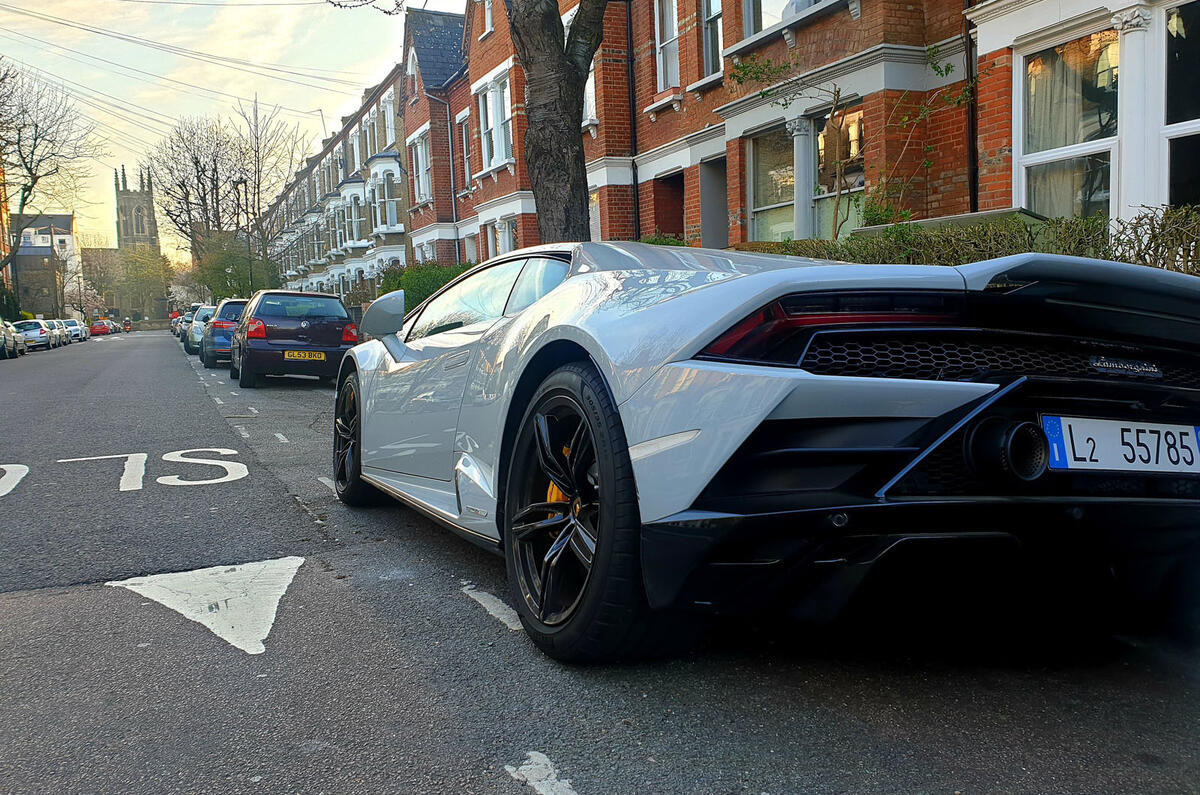
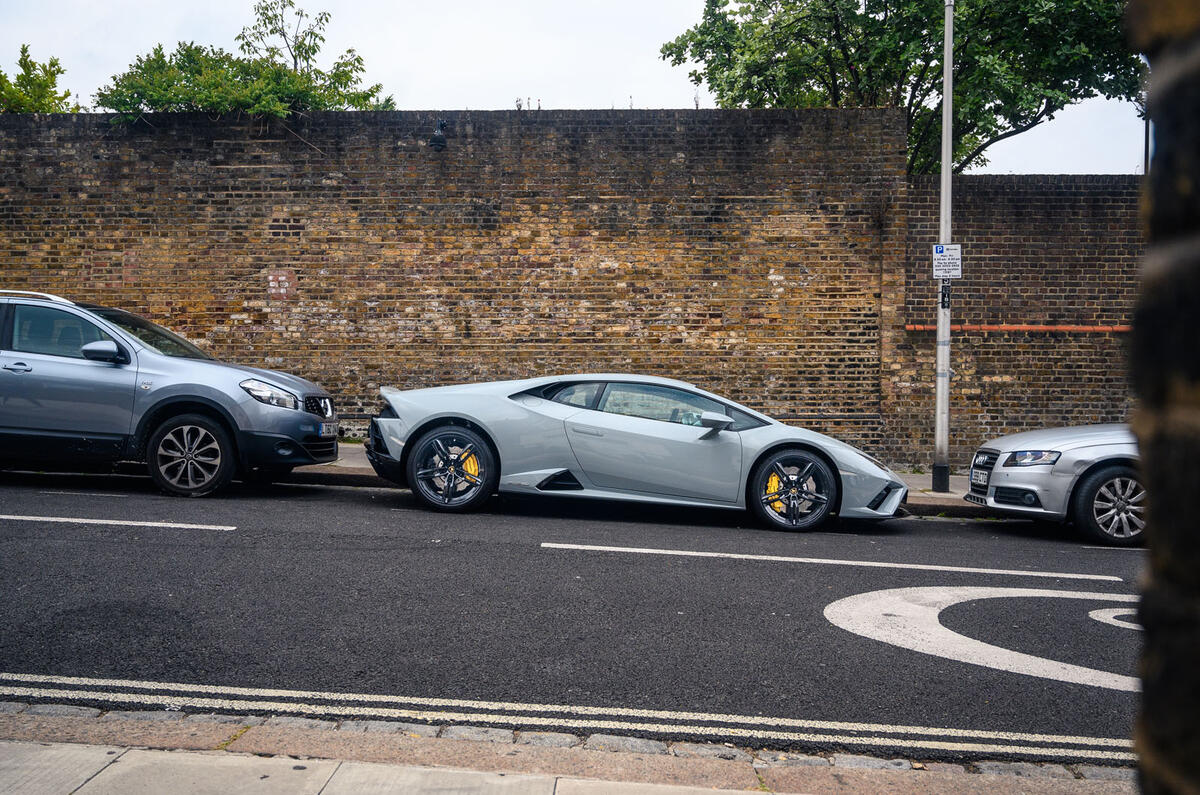
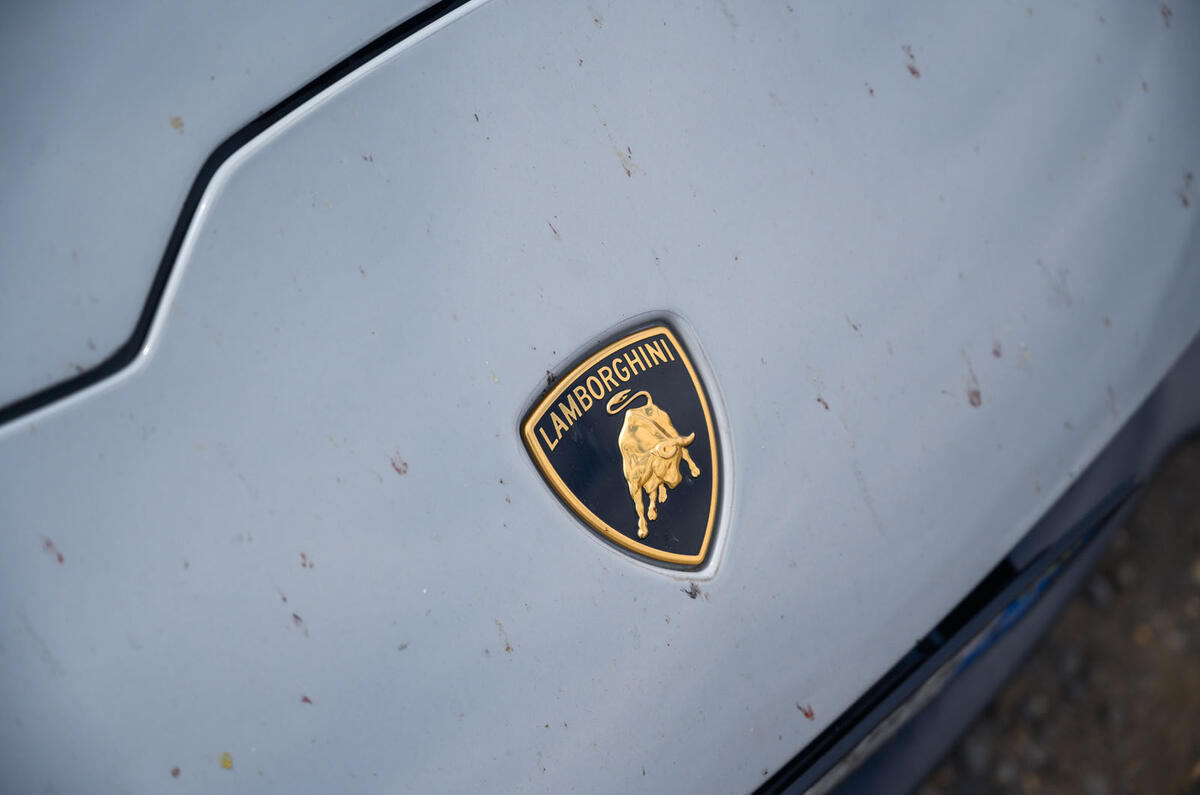
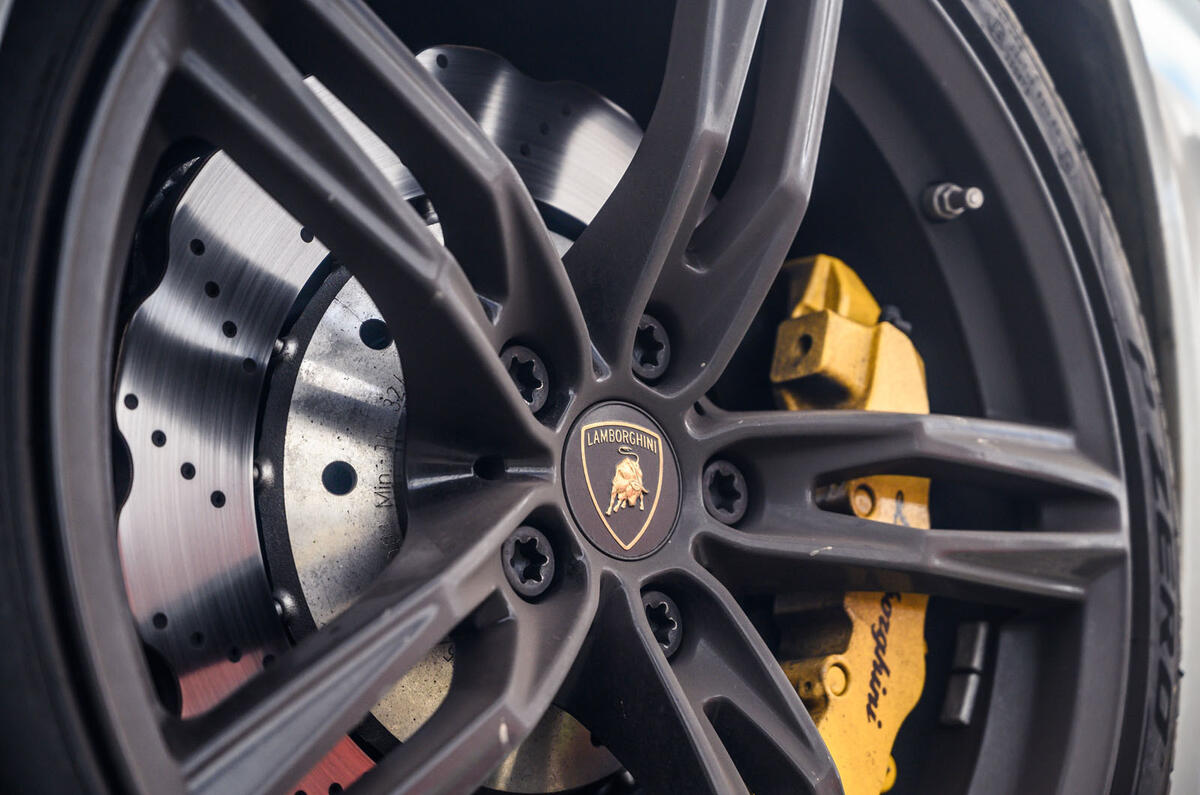
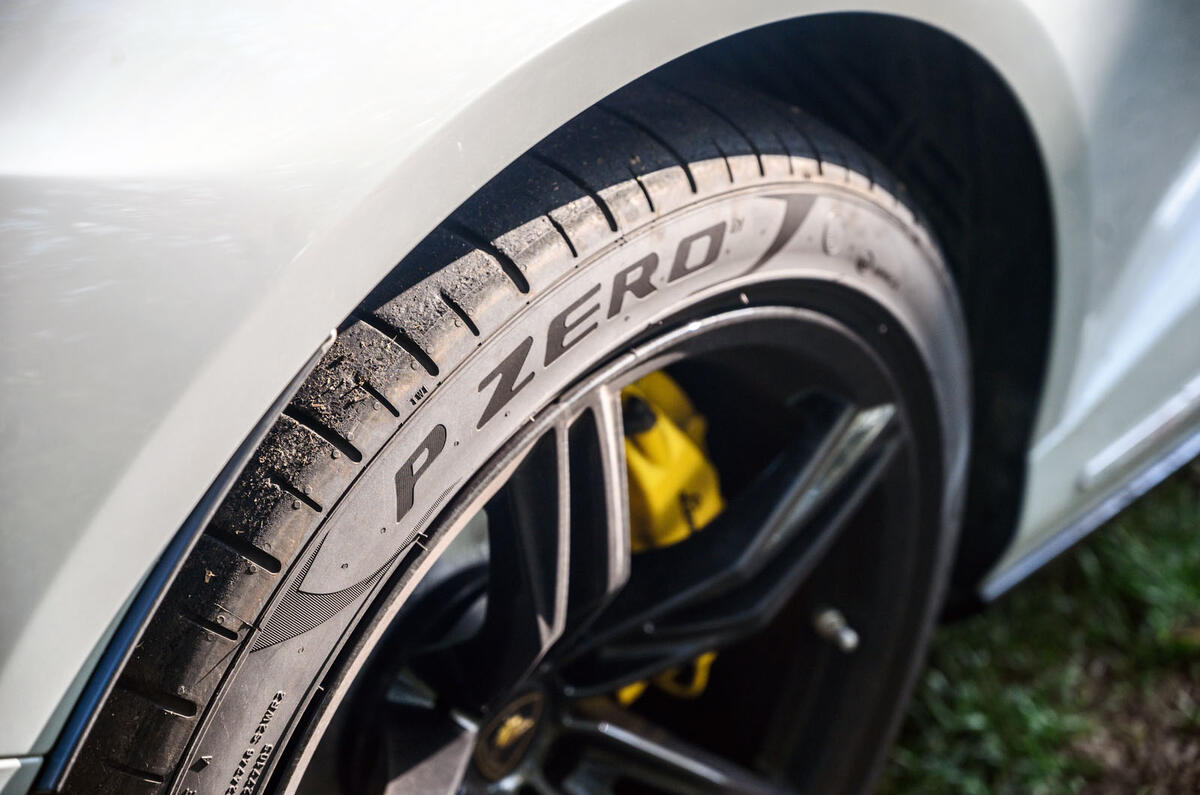
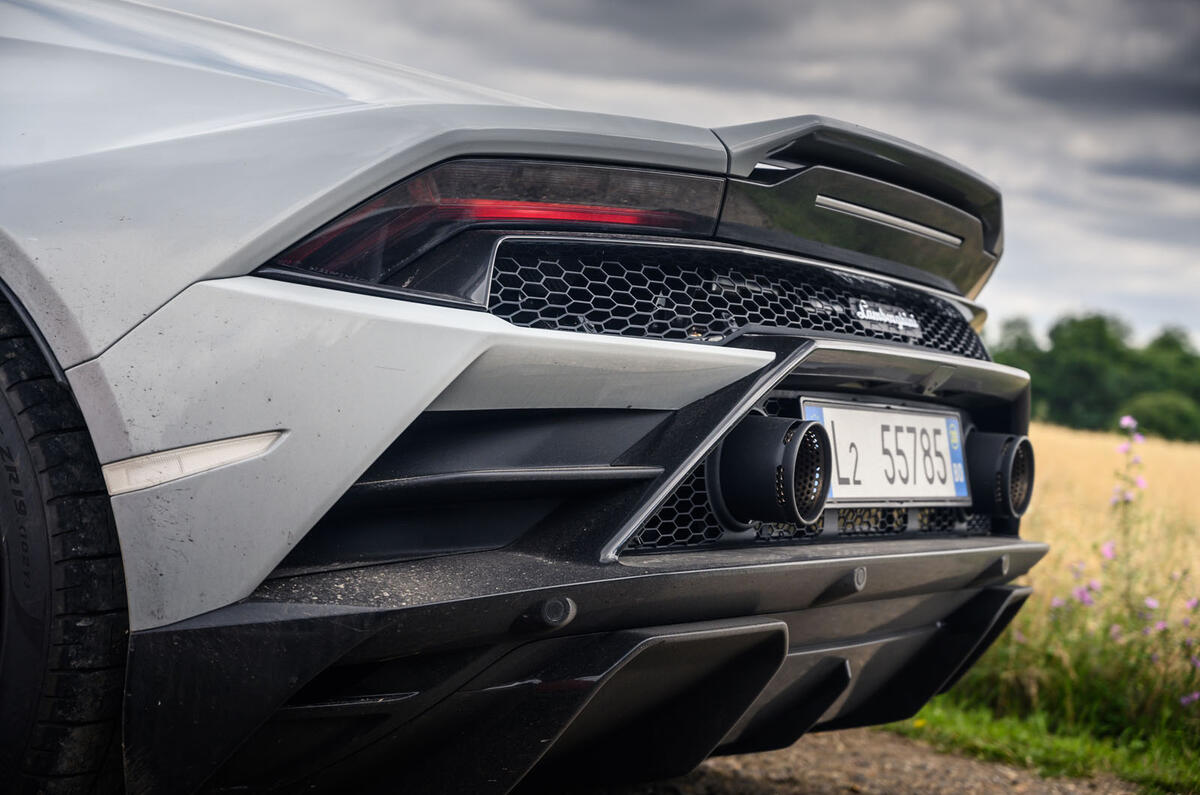
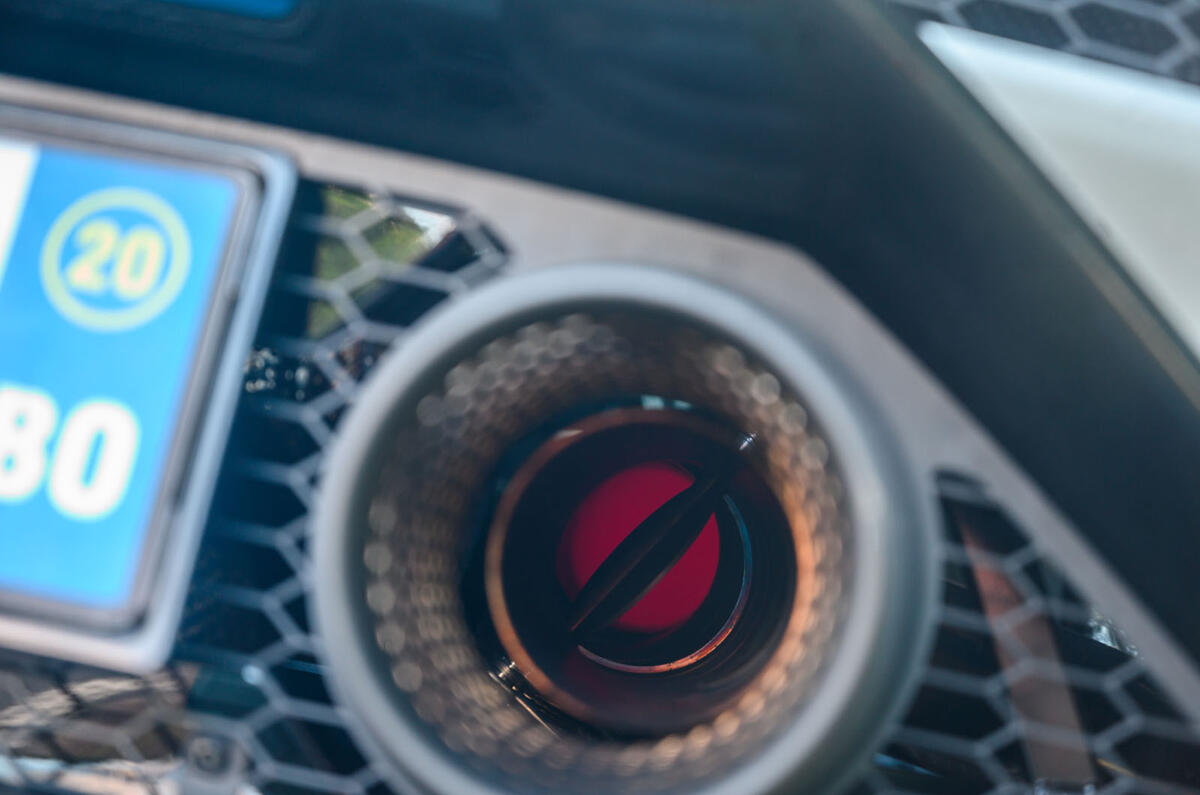
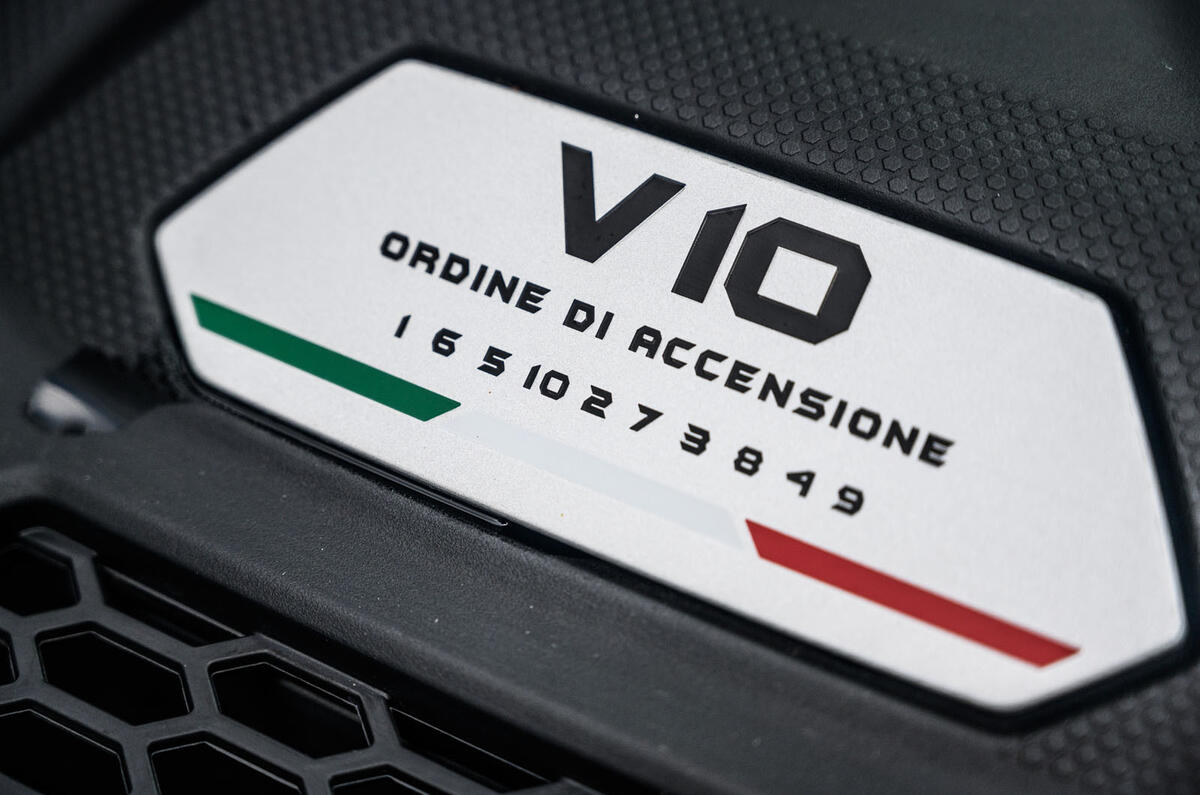
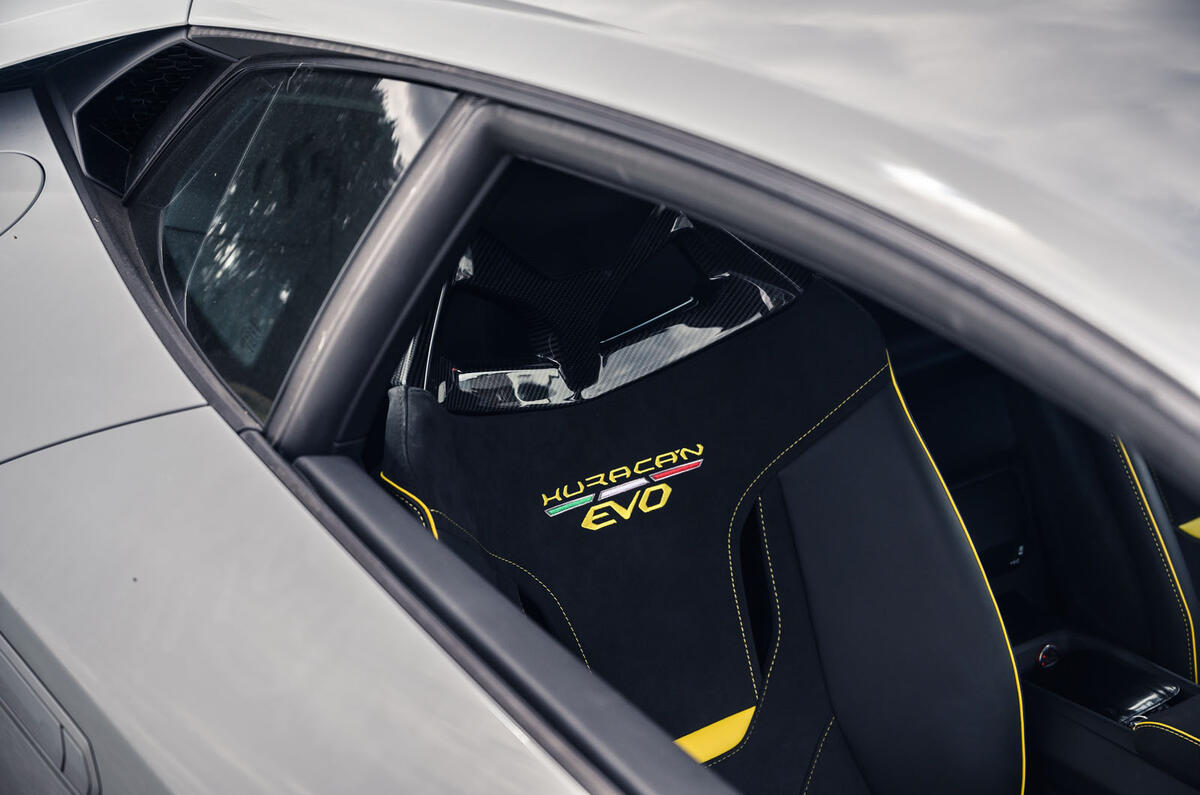
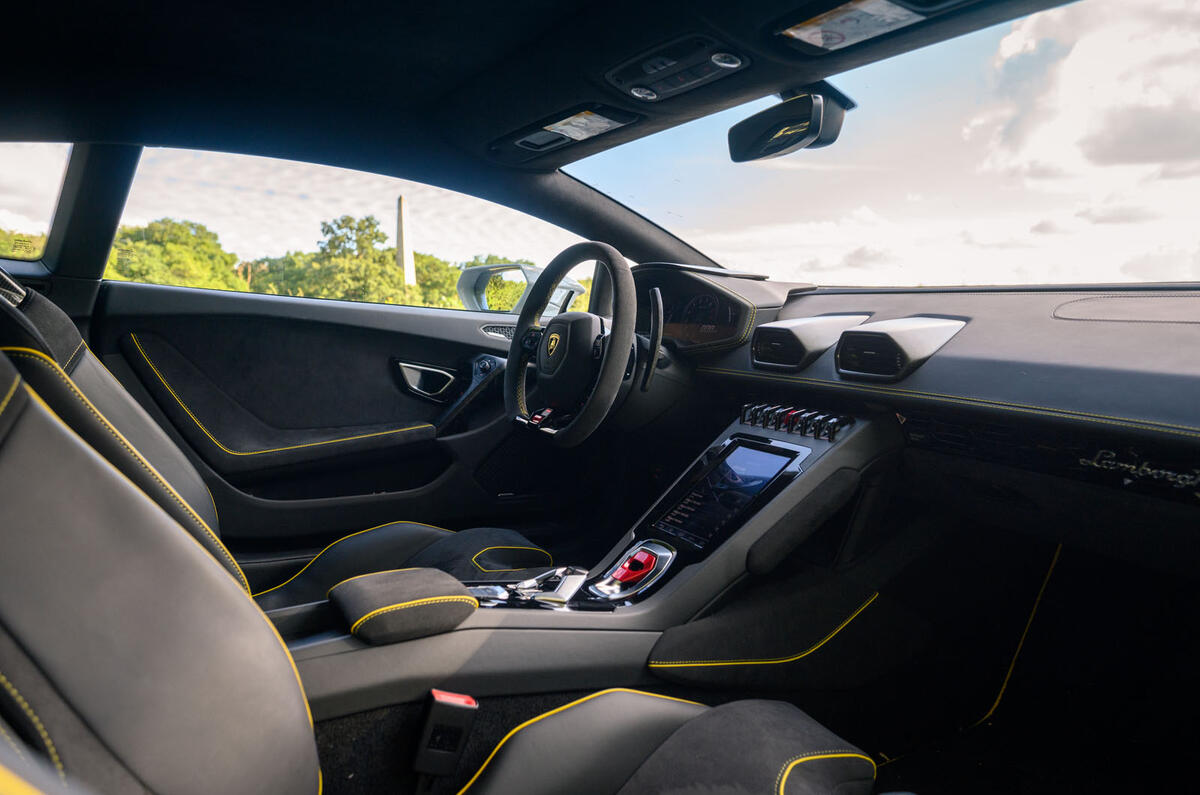
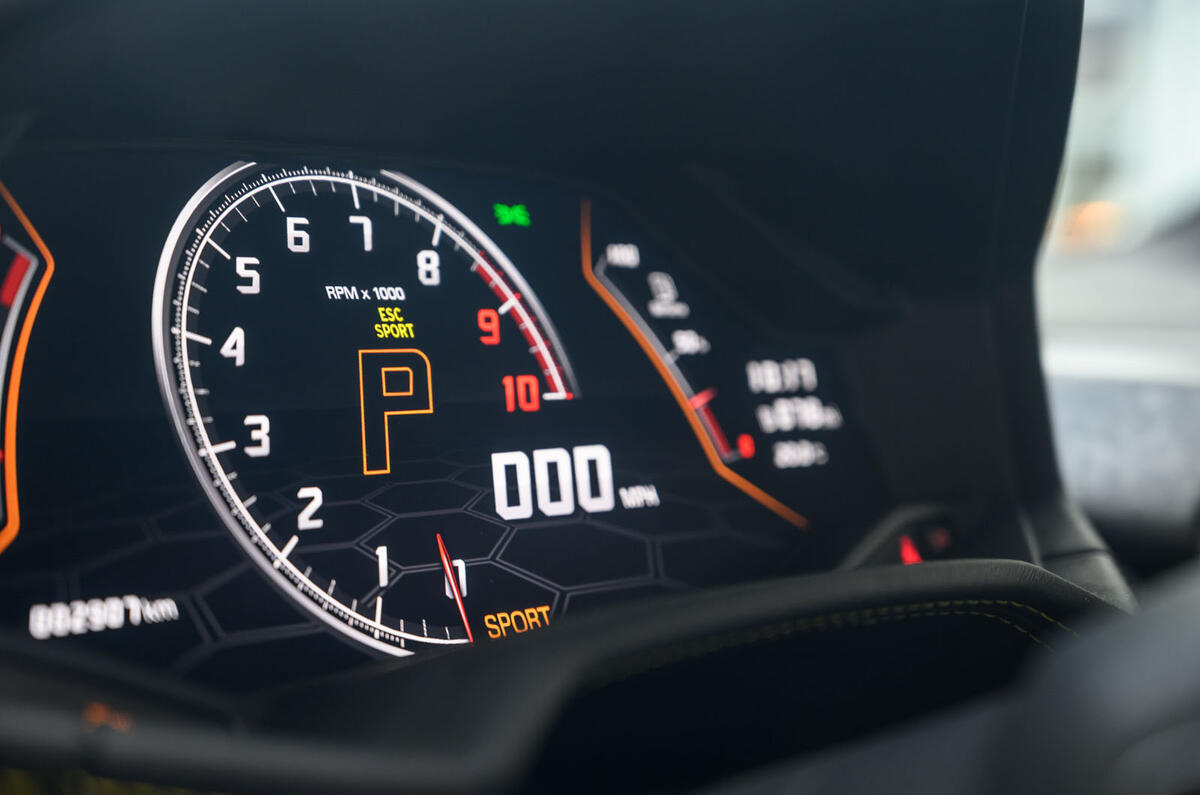
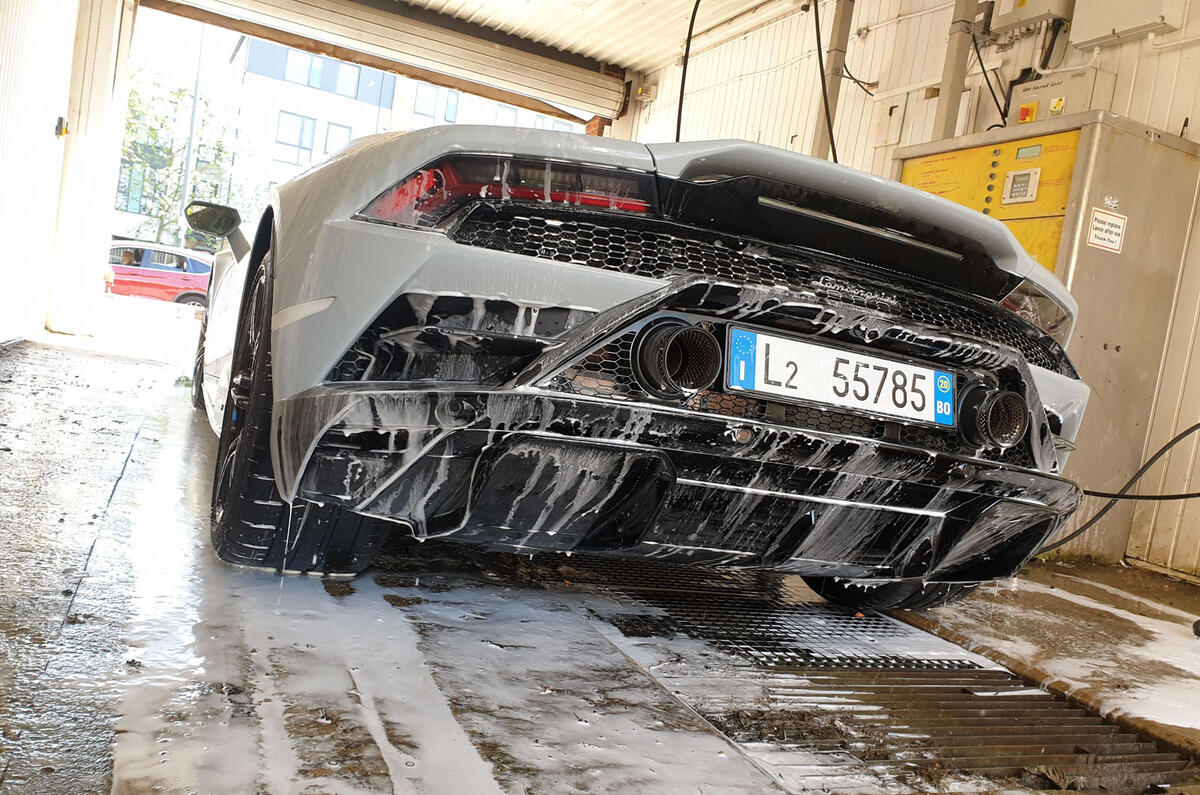
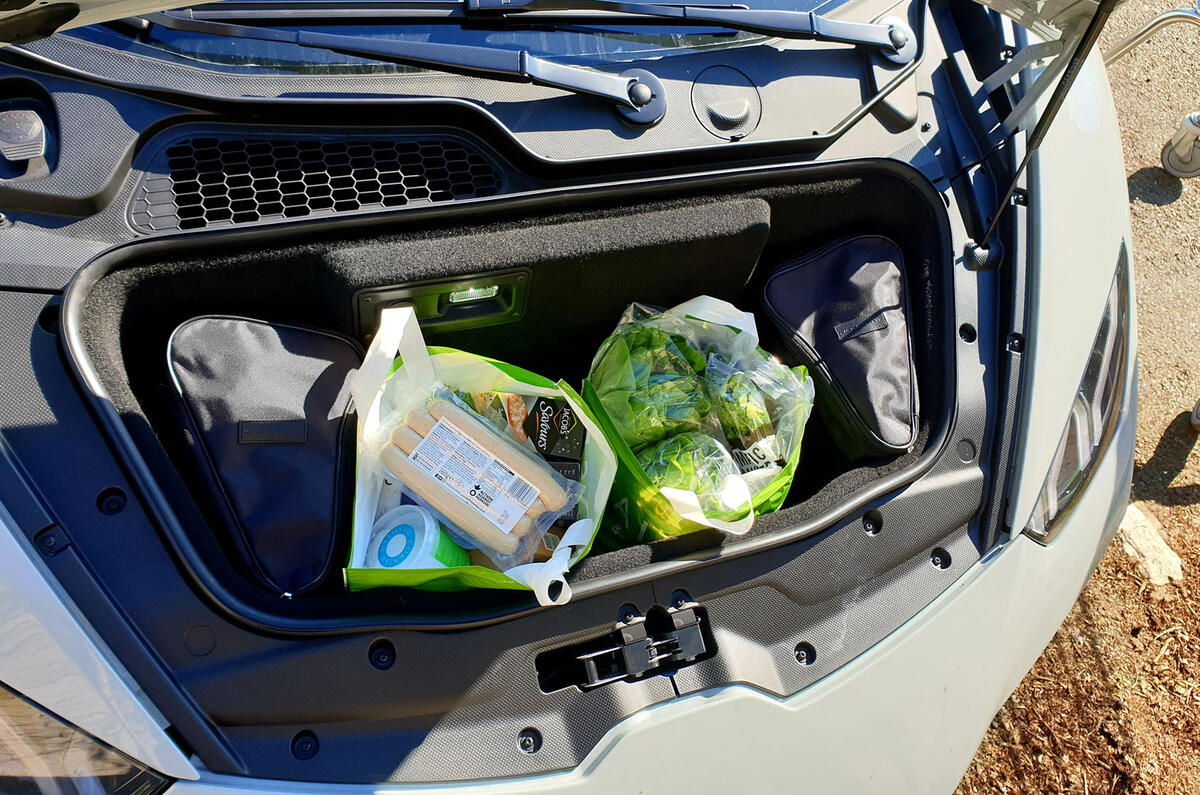
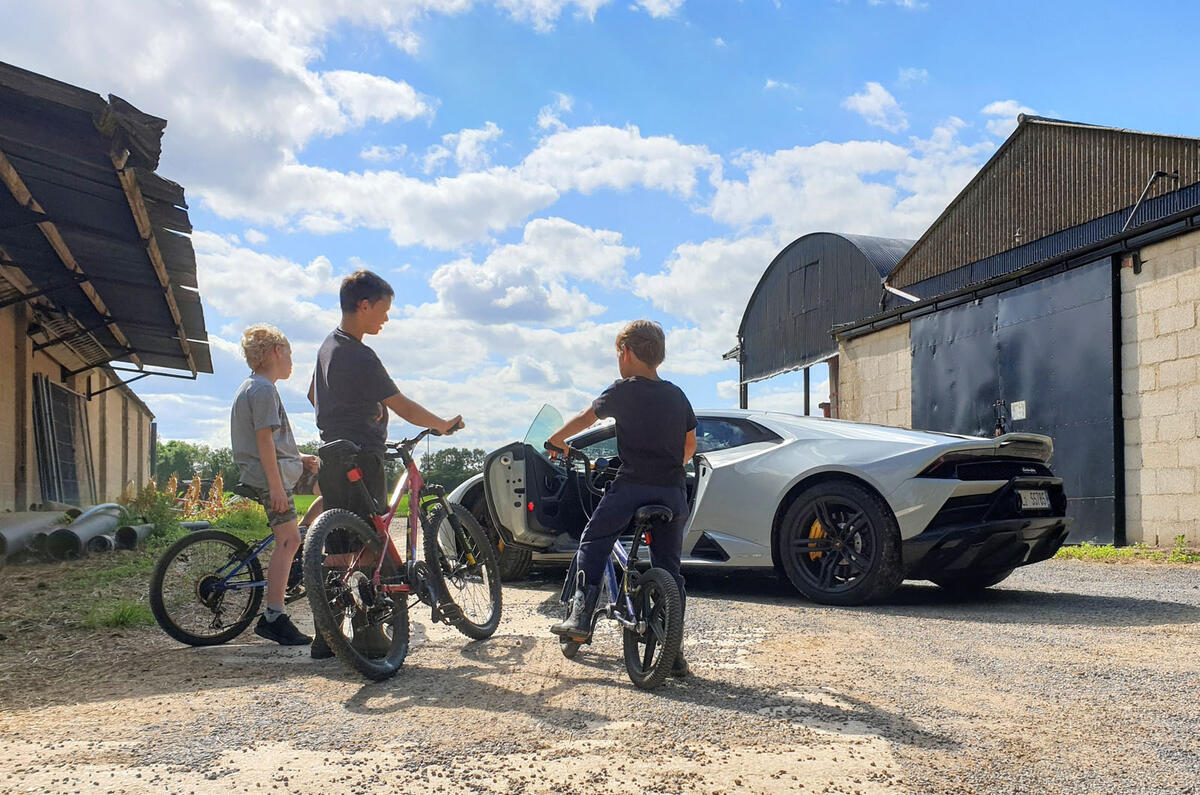

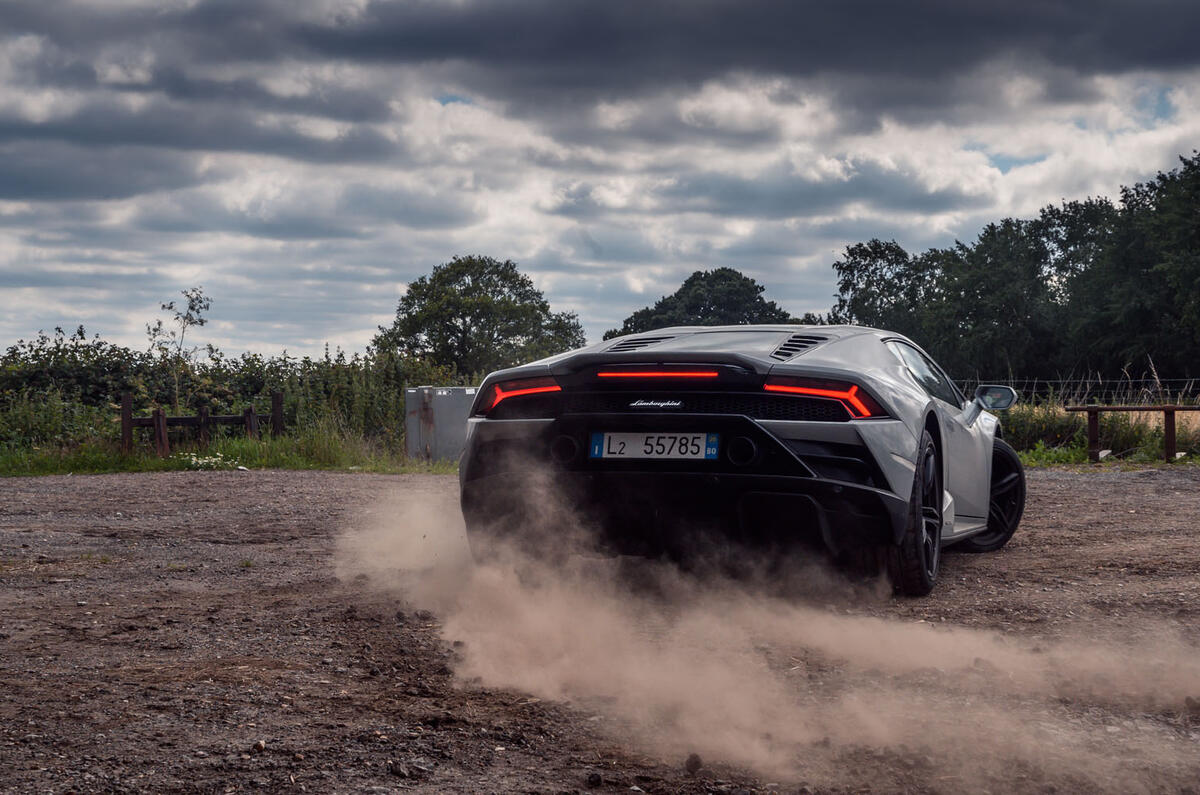
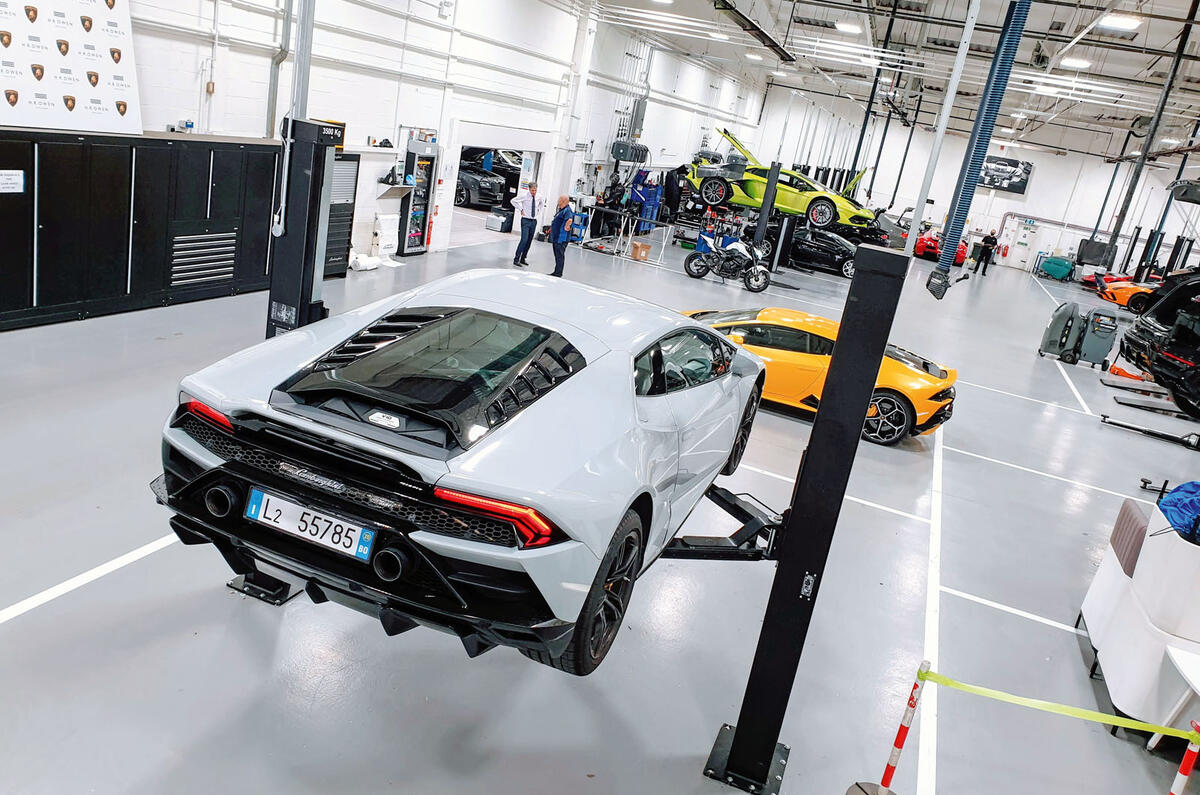
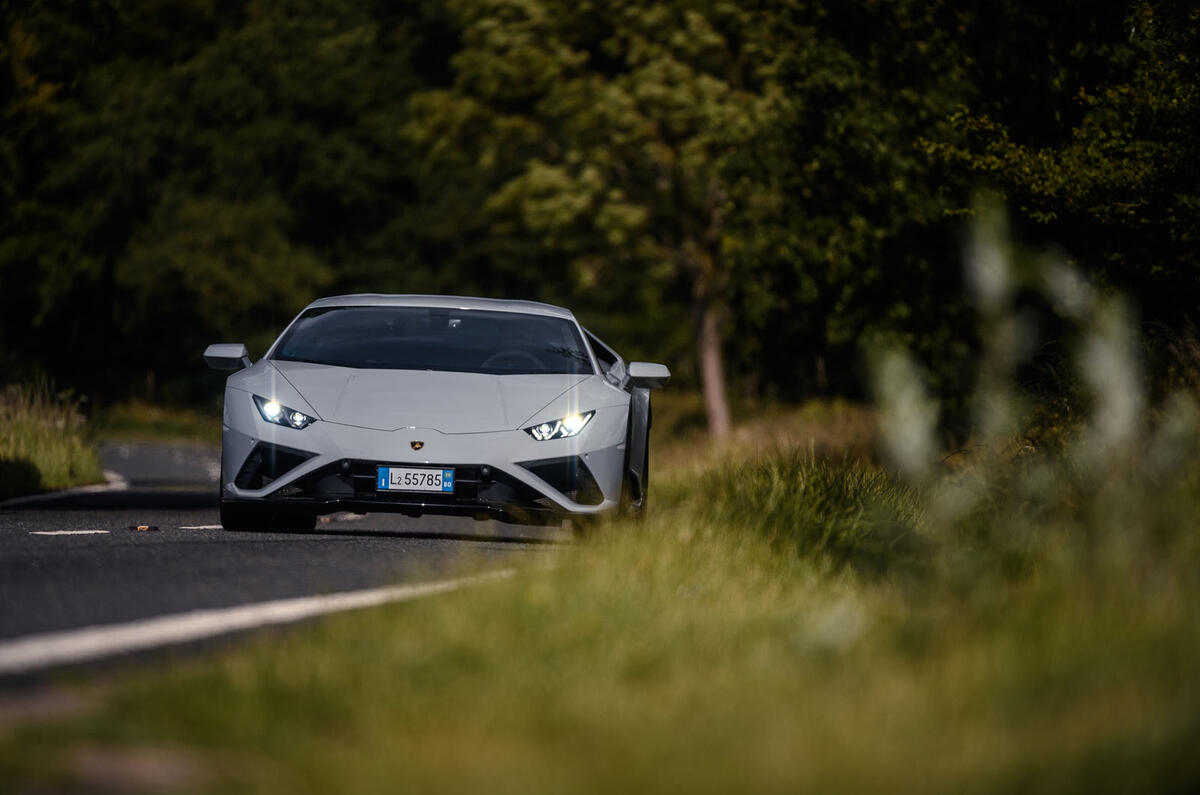
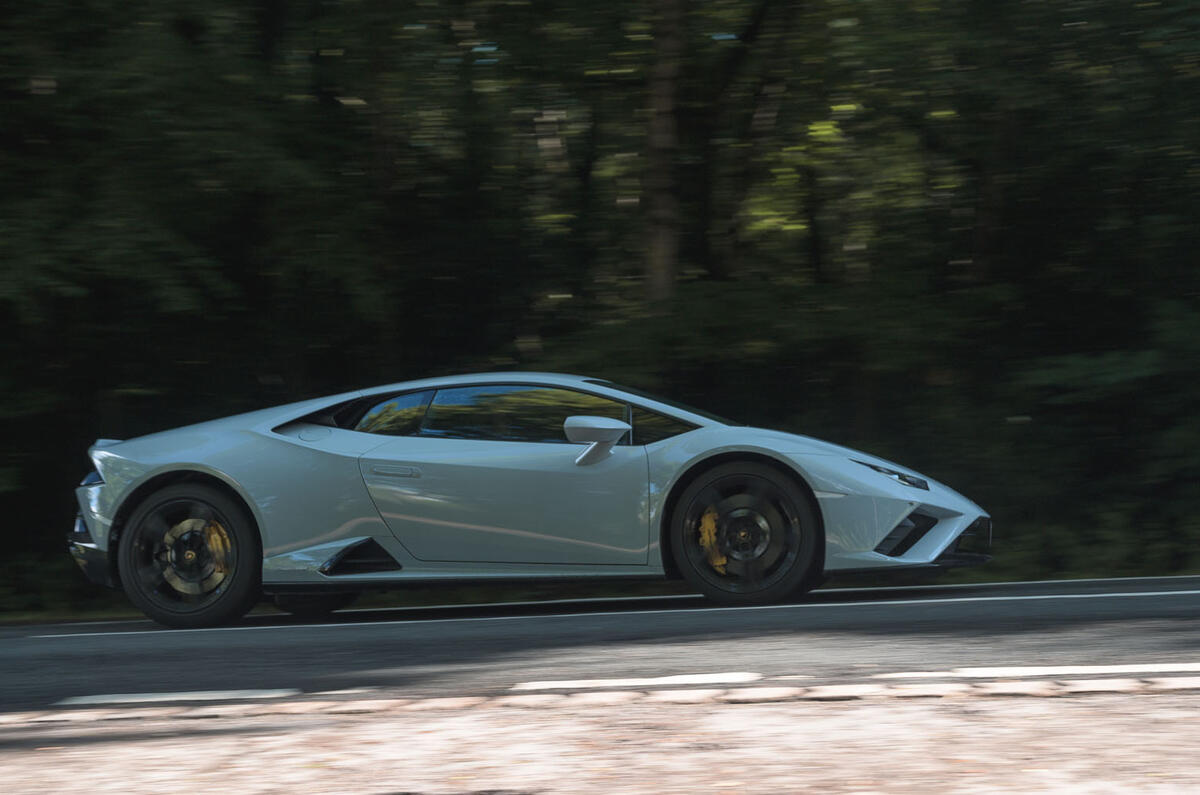
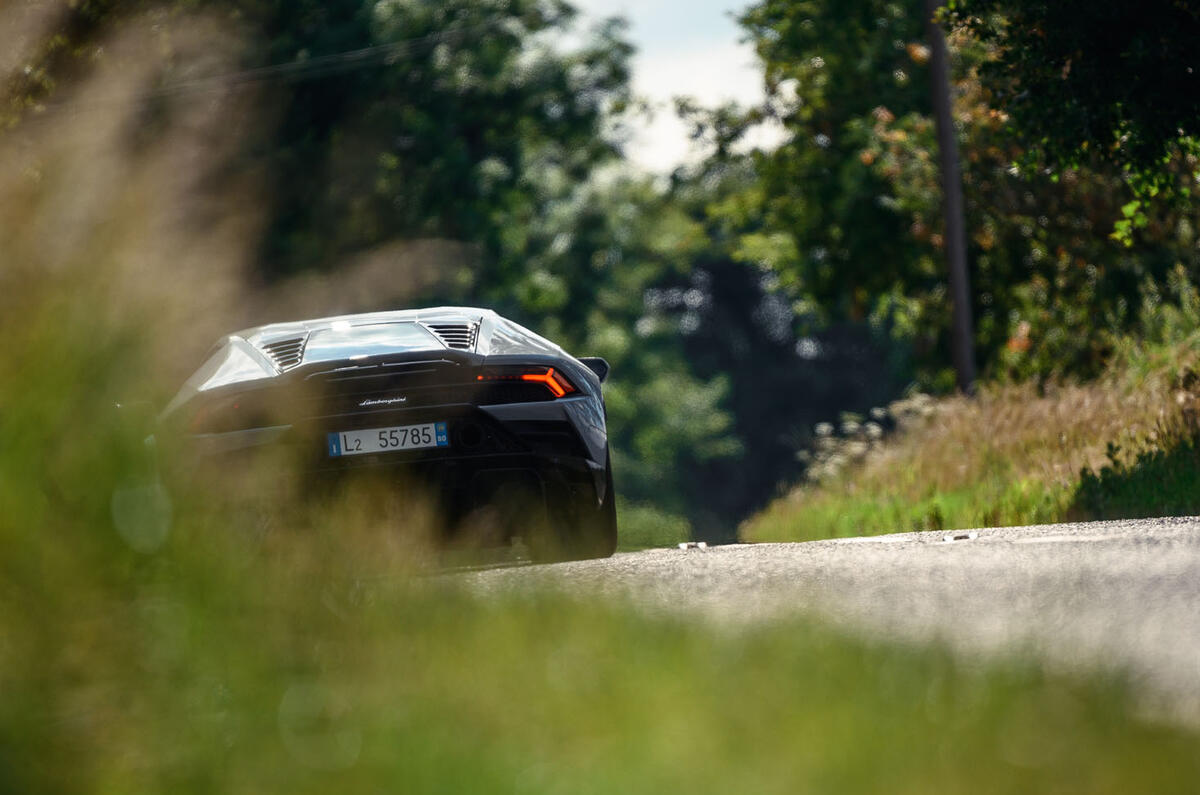
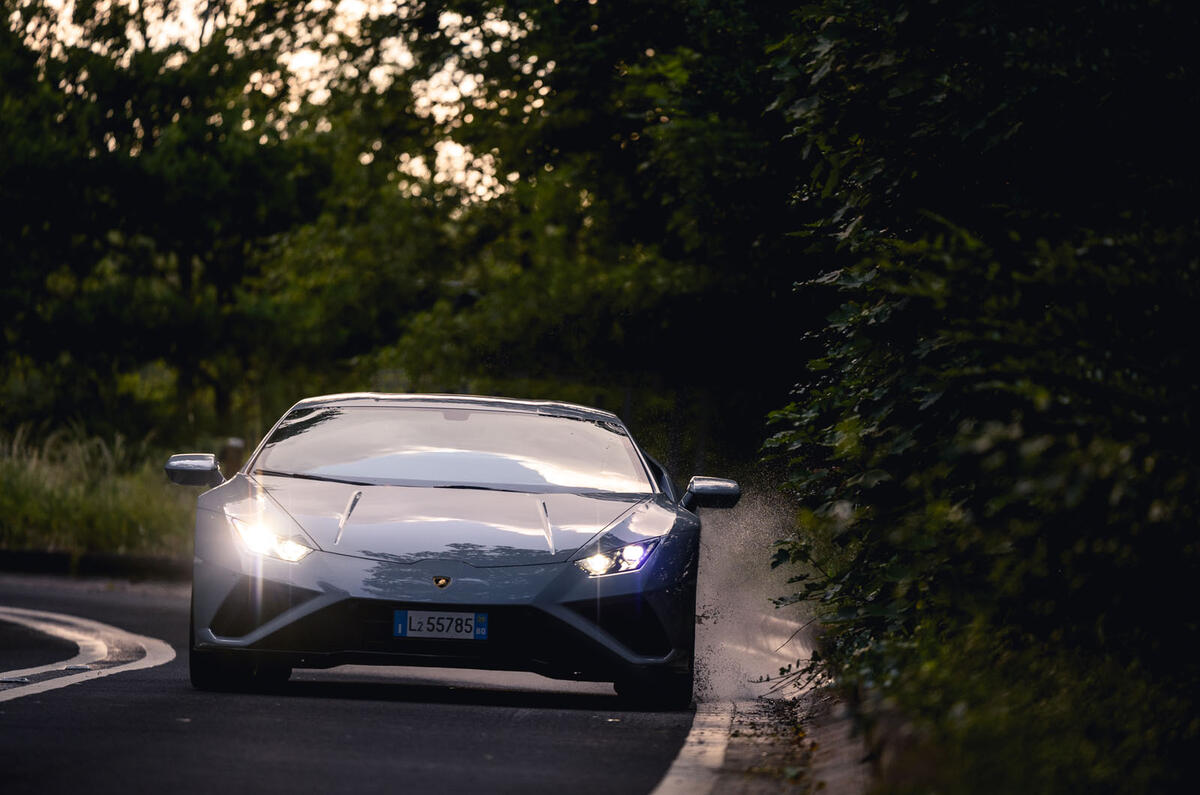
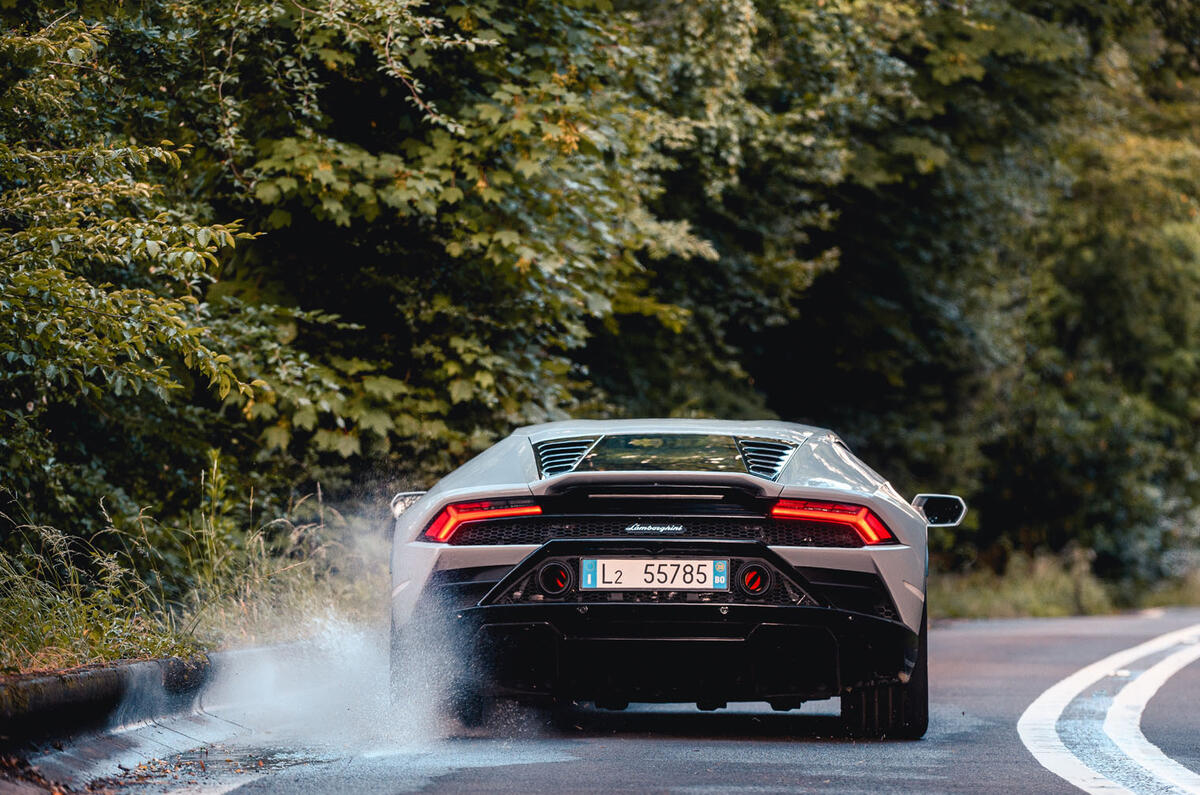
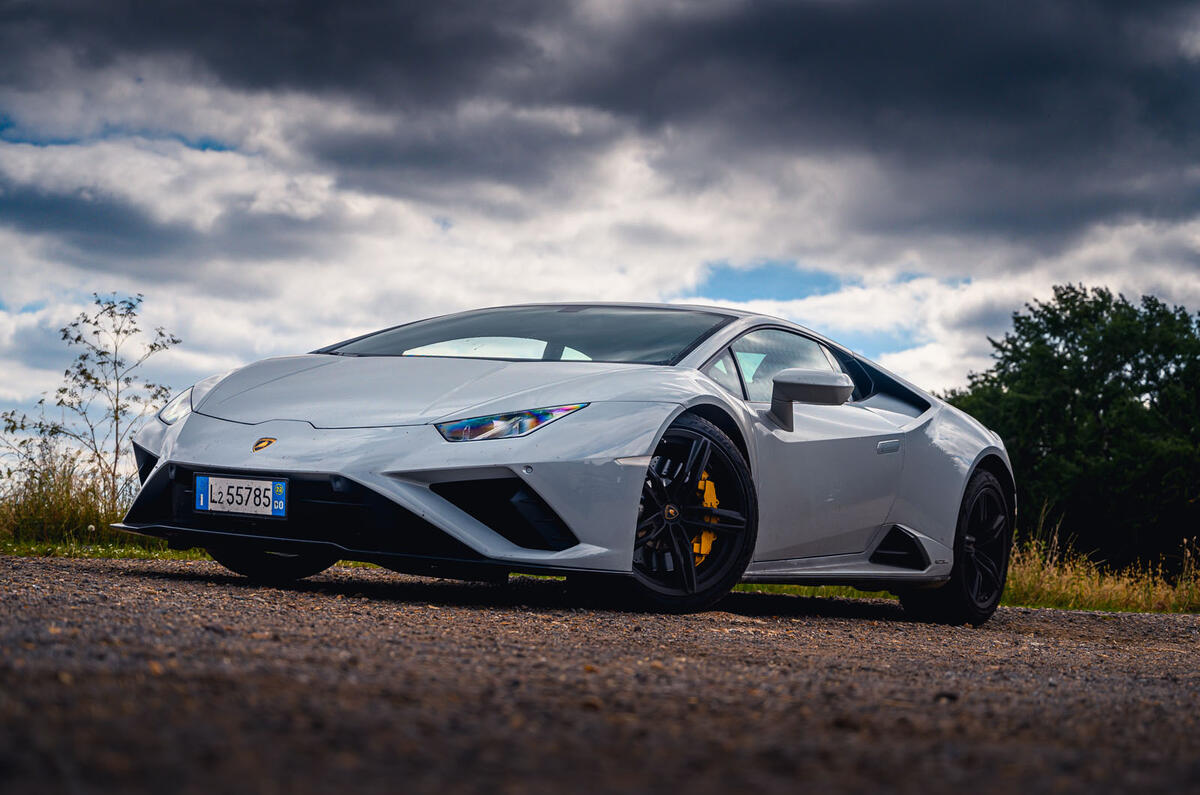






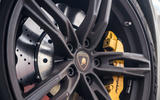
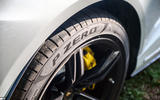
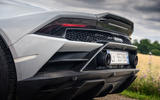


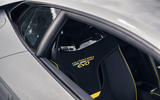
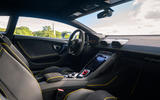

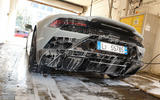
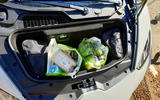





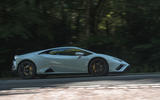










Join the debate
Add your comment
Yes, But No
Yes you can, but no you won't. I own GT4 and have owned GT3RS, neither were used as daily drivers because I had something better for that. And that's true for anyone that buys one of these. It's why motoring journalists are the last people to listen to when considering ownership of these types of vehicles - go to the brand forums, Rennlist as an example.
Boris9119 – the forums are
Boris9119 – the forums are great value, especially as many owners writing on them have cars from several brands. But I do slightly take issue with your assertion that journalists are 'the last people to listen to' (while accepting that we might not be the very first).
As it says, I was stuck with this Huracán as my only car, and have reported the facts of four months running it, good and bad. Hopefully people reading Autocar will find the story informative but also entertaining. Fair enough, unlike you I've never bought a car like this, but I did truly rely on it and I've also driven every one of its rivals extensively, which ought to count for something.
Anyway, if the question is whether you could live with this car everyday, you clearly could. Would you? As you say, probably not – though because this was my only car, I didn't have any choice.
Thanks,
RL
Next car
Tycoon – not sure my
Tycoon – not sure my neighbours would warm to an RSQ8 in quite the same way… There is something new coming, something smaller and cheaper but very interesting all the same – it’ll be in the September 9 issue.
Two things:
Two things:
1. Richard states 305mm tire width - incorrect. The configurator specifies 295 for the 19" tire.
2. Why any sane person would want to drive in Sport mode in the wet is beyond me, unless Lamborghini developed a Wet mode a la Porsche, or get the AWD model.
Manicm – the rear tyres on
Manicm – the rear tyres on this car were 305/35.
The reason you'd want Sport mode is because the throttle response is sharper, the exhaust more expressive and the gear-changes sharper. If you want to enjoy the car at its best, you therefore need Sport, because Strada is too languid for almost everything except mulching along – when you really do just want to get from A to B – or motorway driving. And why shouldn’t an owner enjoy the car just because it’s damp? It’s 2020, not 1965. It’s now possible to have your cake and eat it, and even on wet days owners will still want all those heightened sensations, but without the electronics stripped by default. Lamborghini needs to address this for the next generation – it could take the form of the 'Wet mode' you mention.
Thanks,
RL